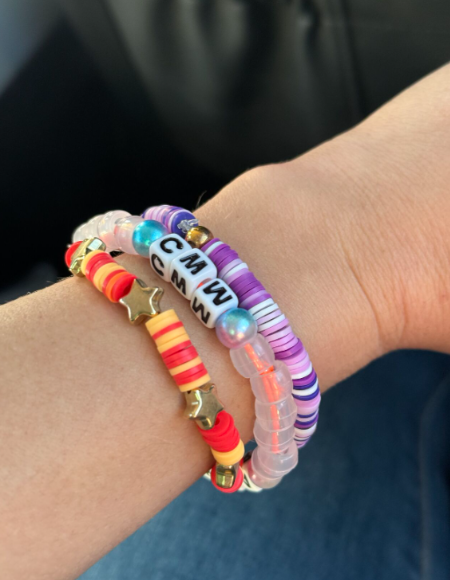As marketers, how do you spark joy in your work? For yourself? For your audiences?
‘Spark’ was the theme of the 2024 Content Marketing World (CMWorld) in San Diego. I can tell you the attendees were all about sparking joy from seeing each other and from the amazing content shared by the many, many speakers.
Three key themes stood out to the TopRank Marketing team:
- SEO had a disruptive year
- Content performance is more measurable than in the past
- There is a consistent love/hate relationship with AI
Let’s look at how the sparks flew and dive a bit deeper into a few of the presentations and themes.
A spark of big story ideas
Great brands tell great stories, said Content Marketing World keynote R. Ethan Braden, Vice President, Chief Marketing and Communications Officer, Texas A&M University. And, “Good stories beat good spreadsheets.” I would add that the spreadsheets can inform, but to understand them, you need a good story.
Great brands focus on delivering outcomes rather than just features. His advice? “Be a painkiller, not a vitamin.”
Ethan’s presentation highlighted these qualities of brands that really matter:
- Stand for something for someone.
- Offer outcomes, not features.
- Are about feelings, not facts.
- And they tell great stories.
So, what story and stories are you telling?
Slow it down
I wasn’t at the 2023 Content Marketing World, but I was told the sessions on Artificial Intelligence (AI) were jam-packed. If 2023 was the year of AI, 2024 was the year of human-driven content. There was a lot of interest in AI, but it was more about how to work with it in new ways. Discussions sparked around how to work smarter with AI, but not necessarily use it to make work faster.
“For me, the overall feeling in marketing right now was well-stated by Robert Rose in his keynote: ‘We have made marketing much less risky and simultaneously much less joyous.’ Both he and Ann Handley advocated for the value of friction and slowing down — how it makes us smarter and wiser and produces better outcomes — if we’re willing to do the long, hard work. This idea isn’t about avoiding AI. It’s about using AI to do the ‘busy work,’ while we keep our brains engaged in the critical strategic and creative work — not because AI ‘can’t do it,’ but because it actually makes us better marketers (which will drive better results).” – Speaker Ali Orlando Wert, Strategist & Consultant at Ali Wert Marketing
We know AI can write, but it can never be a storyteller. It can help, but it won’t be taking our marketing jobs.
One of my favorite speakers, Ann Handley, Chief Content Officer, MarketingProfs, challenged us to rethink ASAP (As Soon As Possible) to AsAP or As slow As possible: slowing down at the best moments to deliver the best possible results. It’s about understanding when to slow down and where to spend your mental energy.
Where and when do you need to take it slower to see better results?
AI and the SEO disruption
AI is also disrupting search. There’s a new trend called zero-click marketing. It’s getting harder to get the clicks. In a standing-room only presentation, Ali Orlando Wert, Strategist & Consultant at Ali Wert Marketing, called out that ~60% of Google searches end without a click. Why?
There’s an AI overview of the answer or there are featured snippets.
Plus, It’s getting harder to attribute organic Google traffic with increasing user rejection of cookies.
Ali’s suggestion: we need to exchange the current playbook for a future-proof content marketing strategy that will work no matter what Google decides to do. The plan:
- Build a content strategy that’s incredibly unique to your business
- Invest in building your brand authority
- Reduce reliance on SEO with a diversified brand awareness strategy
- Re-evaluate how you measure your content marketing efforts
So, prioritize relevance and resonance over ranking potential.
“Digital marketing in 2024 is a lot like marketing in 1964. It is getting the right message that appeals to the right people in the right places at the right time to the right audience.” – Rand Fishkin, SparkToro
- Read more on our blog: Age of SGE: How Will AI Affect Search Traffic in the Next Decade?
Marketing content closes deals
How do you combine great content with technology to facilitate distribution, measurement, and attribution?
Bernie Borges, V.P. Global Content Marketing, iQor, is trying to solve this. He shared how they are utilizing HighSpot Sales Enablement Platform in conjunction with Salesforce and HubSpot to track content success at a contact, company and deal level. It’s inspiring to see that level of granularity on how content is contributing to sales success.
Influencer marketing for the win
I had the pleasure of presenting for the first time at CMWorld on The Influencer Dream Team. As marketers, we often dream of bringing influencers to give us the dream results. But, without a fully integrated influencer marketing program with our overall campaigns, that dream may just stay ‘a dream.’
I presented a few findings from our upcoming 2025 Influencer Marketing Report to set the stage for what is happening with influencer marketing. Then, we dove into the Content Marketing Award-winning Sprinklr Socialverse campaign.
Are you integrating influencer marketing fully into your marketing campaigns for award-winning success?
The CMWorld community shines
Unlike some conferences I’ve attended, there was a real sense of community at CMWorld. At the speakers kick-off event, you could feel the camaraderie and the pure excitement to be together. I still see it in the community discussions on Slack. This group wants to share ideas. It has been a true spark of joy to be among them.
In the spirit of community, we were encouraged to trade friendship bracelets. And, if you came to my presentation, you probably earned one for asking a question.

Photo credit: Ali Orlando Wert
CMWorld presented a Community Champion to former TopRanker and speaker Amy Higgins, Director of Content Strategy, Cloudflare. Congrats, Amy!
Closing it out with President Barbie
The final keynote had writer and actress Issa Rae (President Barbie to all my fellow Barbie fans) speaking with Aisha Harris, host of Pop Culture Happy Hour. Issa spoke about getting up early to journal and write. She sets aside days to just write without any meetings or distractions.
Putting together an ensemble where you bring creators and brands together is the winning touch, Issa said.
There were several more great sessions, like A. Lee Judge giving us tips for great virtual video or A.J. Wilcox sharing the secrets to amazing LinkedIn Ads. I thank them for helping me up my marketing game.
If you were at Content Marketing World, what were your favorite takeaways and inspirations? What was your spark? Let us know on X or LinkedIn!



